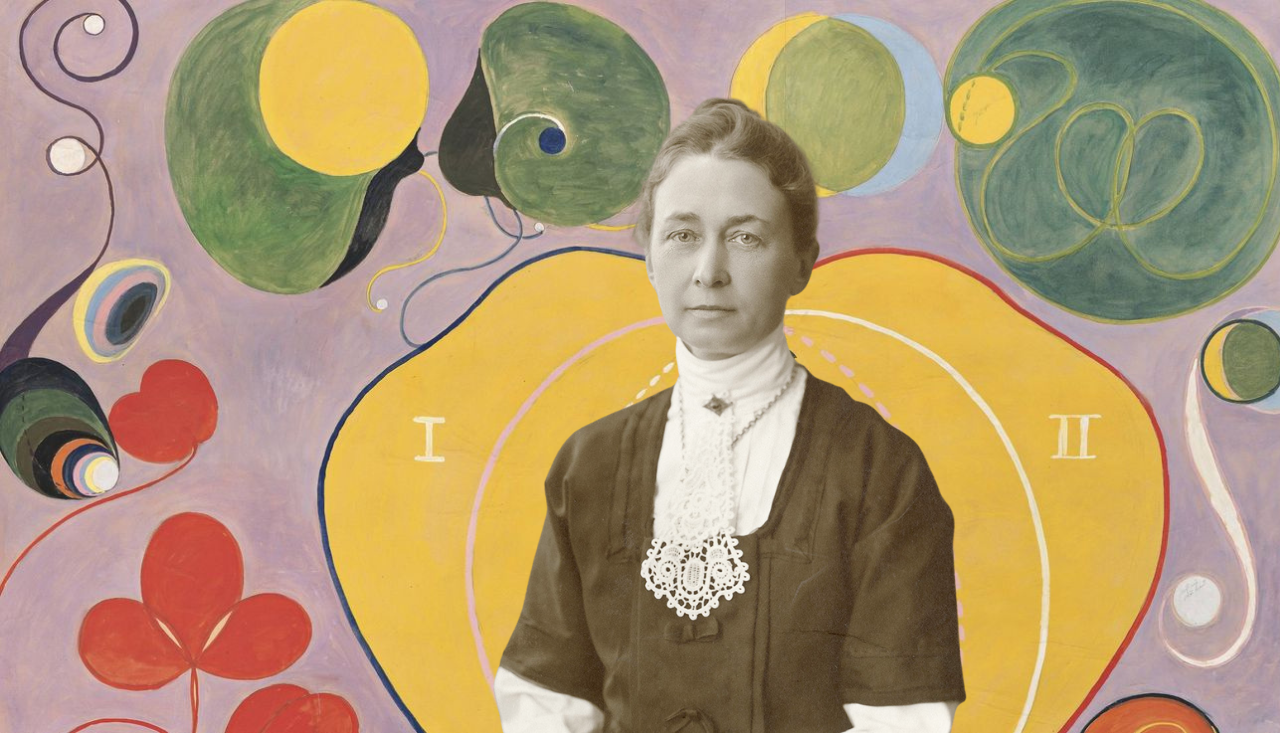In the annals of art history, Hilma af Klint emerges as a singular figure whose oeuvre masterfully intertwines spirituality, mysticism, and abstraction. This Swedish artist transcended the limitations of traditional artistic conventions, as exemplified by her magnum opus, “Paintings for the Temple.” In this series, af Klint envisioned an ethereal architectural space designed to facilitate the transcendence of earthly bounds, seeking balance between opposites. By employing the term “temple,” she strove to create an inclusive sanctuary for spiritual exploration, unbounded by any specific religious tradition.
At the Academy of Fine Arts, af Klint’s presence was instrumental in forming “The Five” (De Fem) – a group of like-minded artists united by a shared spiritual and creative vision. They embarked on a spiritual journey, exploring theosophical teachings and engaging in spiritistic séances. These mystical experiences resulted in a collection of enigmatic messages from higher beings, recorded in “The High Masters.”
Inspired by these encounters, af Klint began experimenting with automatic drawing in 1896, which ultimately gave rise to a unique geometric visual language that sought to capture forces beyond human experience. Guided by spiritual entities, she investigated atomic structures, world religions, and the plant kingdom, meticulously documenting her findings. Her creative process was characterized by a sense of immediacy, painting rapidly and without the need for preliminary sketches, guided by an unseen spiritual force. This approach culminated in 1906 when she created her first abstract paintings, under the direction of the High Masters for the enigmatic “Paintings for the Temple.”
Af Klint’s abstract works are imbued with a modern aesthetic, incorporating symbolic elements, letters, and words. They explore the balance between dualities, such as the earthly and the esoteric, the male and the female, and the forces of good and evil. Colors hold symbolic significance in her paintings: blue represents the female spirit, yellow symbolizes the male spirit, and pink or red embodies physical and spiritual love. Series like “The Swan” and “The Dove” invite contemplation on themes of transcendence and love, respectively.
After completing “Paintings for the Temple,” af Klint’s spiritual guidance diminished, yet she persisted in creating abstract works. Her later pieces, smaller in scale and executed in various media, engage with themes such as the intersection of religious perspectives throughout history and the dynamic relationship between the physical and the esoteric realms. The influence of Anthroposophical Society’s artistic theories can be observed in these works, reflecting her artistic evolution.
Hilma af Klint’s indelible impact on modern art cannot be overstated. Her groundbreaking contributions have become an integral part of the modernist pursuit of innovation in the realms of art, spirituality, politics, and science at the turn of the twentieth century. Her work resonates with that of other spiritual abstractionists, such as Wassily Kandinsky, Piet Mondrian, and Kazimir Malevich, who also drew inspiration from the Theosophical Movement.
In conclusion, Hilma af Klint’s pioneering role in spiritual abstraction continues to captivate and inspire, prompting us to transcend the boundaries of artistic expression and consider the interconnectedness of art and spirituality. Her extraordinary legacy remains an essential touchstone in modern art history.
Ian Morris
Ian Morris is a distinguished figure in the realm of wellness and self-discovery, widely celebrated for his groundbreaking Frequency Minded Music and the transformative LTS Method. This unique approach artfully combines healing frequencies and mesmerizing sounds, providing an oasis of tranquility that encourages relaxation and reduces stress. His innovative methods have resonated with individuals across the globe, guiding them towards discovering their authentic selves and unlocking their inherent potential for health and happiness.




